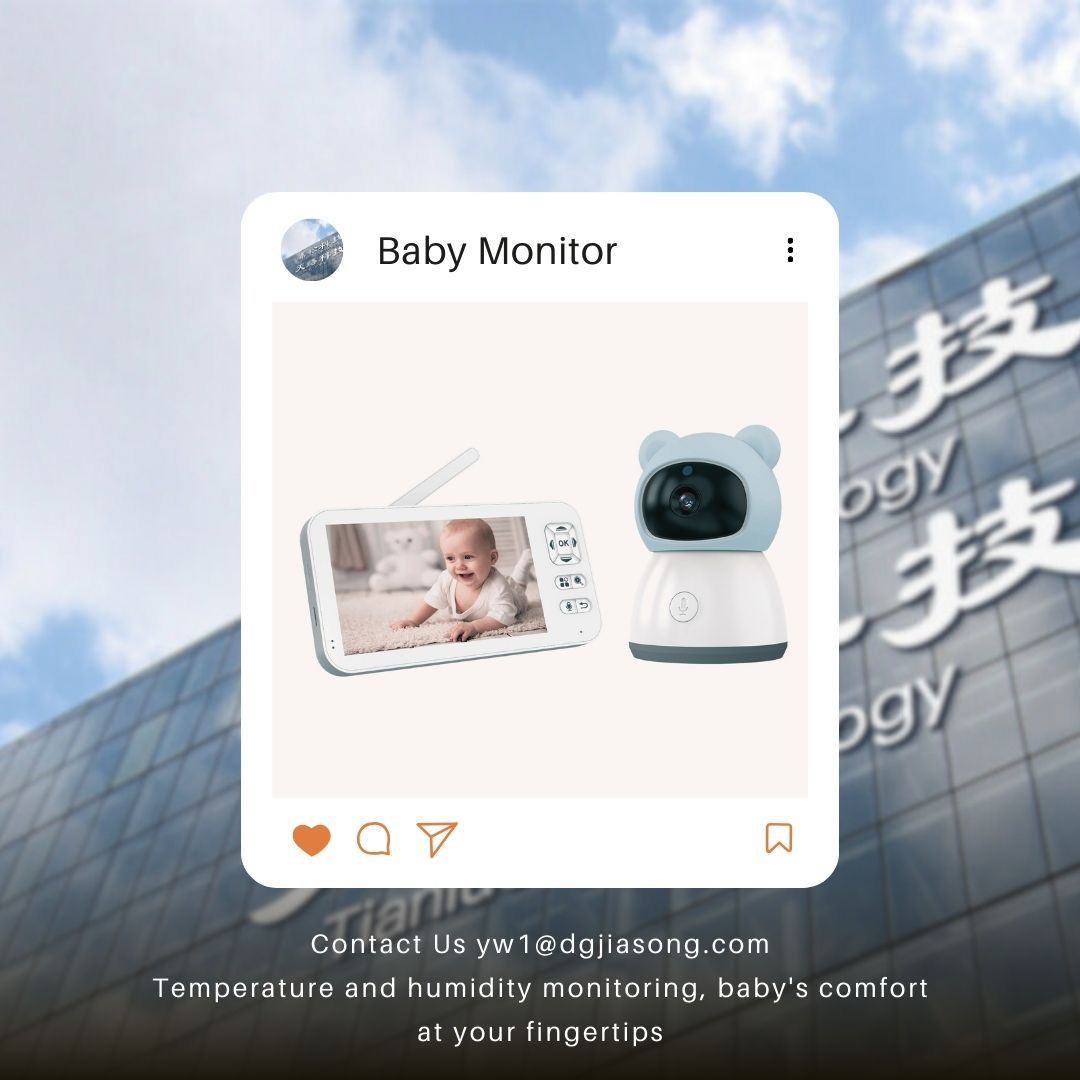Wireless Baby Monitor: Technology Listens, Guards Every Step of Growth
Time:2024-09-27 14:21:08 ?? Views:34

In today's rapidly evolving technological landscape, the wireless baby monitor has emerged as an indispensable smart companion for modern families in childcare. More than just a simple surveillance tool, it's a parenting assistant that blends advanced technology with human-centric design. With its unique noise detection and management features, it fosters a safe and serene environment for babies to grow.
I. High-Sensitivity Microphones
The wireless baby monitor stands out among numerous parenting devices, largely due to its built-in high-sensitivity microphones. Employing cutting-edge acoustic sensing technology, these microphones can capture even the faintest sounds, enabling parents to clearly hear every subtle noise their baby makes, even from the other end of the house.
Working Principle of Microphones: At the heart of microphones lies a diaphragm, which sits at the front and directly interacts with the air. When sound waves (vibrations) reach the diaphragm, it vibrates in response. This vibration is transmitted through a mechanical structure to the electromagnetic induction device or piezoelectric element at the rear. In electromagnetic microphones, the vibration alters the position of a coil in a magnetic field, generating varying electrical signals. Conversely, in piezoelectric microphones, the vibration directly converts into electrical signals. Regardless of the method, the end result is the conversion of sound vibrations into electrical signals for subsequent circuit processing.
II. Conversion and Processing of Sound Signals: Pure Audio, Transmitting Warmth
Captured sound signals undergo intricate conversion and processing before presenting themselves to parents in pure, clear audio quality. This process tests manufacturers' technical prowess and directly impacts the user experience of wireless baby monitors.
Conversion of Sound Signals: After converting sound vibrations into electrical signals, these signals enter the internal circuitry of the wireless baby monitor for further processing. Here, the signals are first amplified to boost their strength for easier handling by subsequent circuits. Low-noise, high-fidelity designs are employed in amplification circuits to prevent signal distortion.
Processing of Sound Signals: Amplified electrical signals then enter filtering circuits to eliminate unwanted noise and interference. The design of filtering circuits is crucial, requiring precise adjustments based on the frequency characteristics of baby sounds and ambient noise. Effective filtering preserves the purity of baby sounds while suppressing environmental noise.
III. Intelligent Noise Recognition Algorithms: Precise Differentiation, Safeguarding Serenity
Wireless baby monitors feature intelligent noise recognition algorithms that embody their smart capabilities. These algorithms analyze incoming sound signals in real-time, effectively distinguishing between baby sounds and various environmental noises like humming appliances or outside wind.
Working Principle of Algorithms: Based on machine learning or pattern recognition, these algorithms learn to identify sound features through training. During training, they collect extensive sound samples, including various baby sounds (cries, laughs, babbles) and common environmental noises. By analyzing and processing these samples, the algorithms extract feature vectors and store them in a database.
In practical use, when the wireless baby monitor receives new sound signals, the algorithms compare and analyze them against the feature vectors in the database. By calculating similarities, probabilities, and other metrics, the algorithms determine the source and type of sound signals, triggering appropriate responses.
Practical Applications: The intelligent noise recognition algorithms significantly enhance the practicality and convenience of wireless baby monitors. When babies cry, the algorithms quickly identify the sound and trigger alarm mechanisms, prompting parents to attend to their babies promptly. When ambient noise exceeds a threshold, the algorithms automatically adjust volume or take other measures to reduce noise interference, fostering a more serene environment for babies.
IV. Instant Alert System: Guarding Every Moment, Easing Parental Anxiety
The instant alert system of wireless baby monitors constitutes a vital safety component. Upon detecting abnormal situations (e.g., baby crying, excessive ambient noise), the system promptly triggers alarm mechanisms, ensuring parents receive timely information and take action.
Implementation of Alert Mechanisms: Alert mechanisms typically encompass audio and vibration alerts on the base unit, as well as push notifications via the Tuya Smart APP. Audio and vibration alerts on the base unit directly remind parents of anomalies in the baby's room. Meanwhile, push notifications through the APP enable remote monitoring and real-time alerts, keeping parents informed even when away from home.
In conclusion, wireless baby monitors equip parents with comprehensive childcare support through their high-sensitivity microphones, sophisticated sound signal processing, intelligent noise recognition algorithms, and instant alert systems. They not only allow parents to monitor their babies' movements from anywhere but also leverage technology to foster a safer, more comfortable environment for their growth. As technology progresses, wireless baby monitors are poised to play an increasingly important role in modern family childcare, becoming invaluable assistants to parents.
Chinese Website——http://516ip.cn/